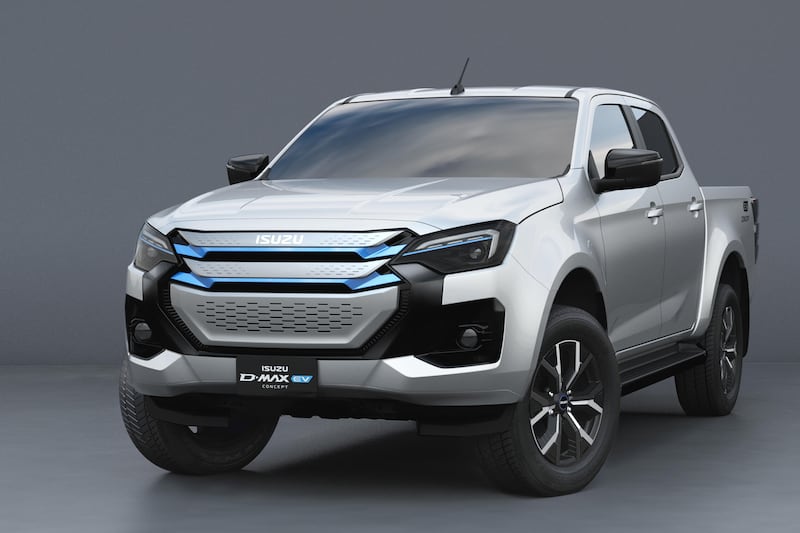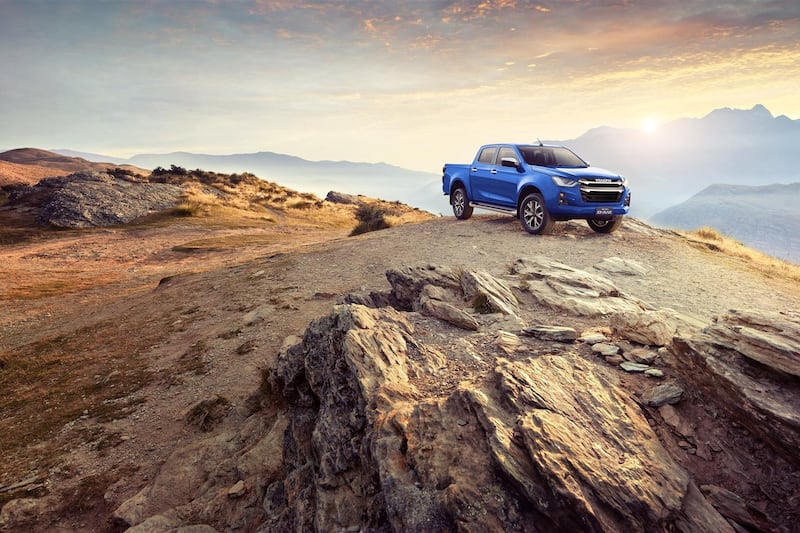WE are conditioned to think that bigger is best. There are exceptions, of course - Lionel Messi isn't a big lad - and while no-one wants to pay a big tax bill we would all like a bigger pay packet.
When it came to cars and trucks, it used to be the case that a bigger engine was always best.
You don't really want the 1.6-litre Ford Focus, you want the 2.0-litre. And you would rather find a brawny 3.0-litre six-cylinder engine under the bonnet of your BMW than a weedy four-cylinder unit. There ain't no substitute for cubic inches, as they say in the United States.
But that logic has been turned on its head in recent years. Downsizing is where it's at.
Your engine's capacity might be smaller than before, but thanks to the latest turbochargers, fuel injectors and whatever goes on inside computer chips, it will also be more powerful, torquier, less polluting and use less fuel.
Ford, for example, will today sell you a Fiesta with a 1.0-litre three-cylinder engine. The engine block is small enough to fit on a piece of A4 paper.
Yet it produces as much as 138bhp - a power output far in excess of what any 1.6-litre or 1.8-litre engine in earlier 'sporty' Fiesta models, like the XR2 or RS1800, was ever able to muster.
So now that less is more, it was only a matter of time before the commercial vehicle world joined in.
First to jump is Isuzu, with its new D-Max pick-up.
Sure, there are improvements all round - it can carry more, for example - but the really eye-catching figure is a drop in engine capacity from 2.5-litre to 1.9-litre.

Isuzu is to be commended for fully embracing the downsizing trend - the new engine even dips below the psychological 2.0-litre threshold, for goodness sake - in the macho world of the pick-up.
The engine - a four-cylinder diesel turbo, as you might expect - is a bit of a marvel.
The power output is essentially the same as before - the new D-Max's 162bhp plays against its predecessor's 161bhp - but the on-paper torque figure is lower, falling from 295lb.ft to 266lb.ft.
When it comes to pulling a trailer or lugging heavy loads - core pick-up duties, in other words - torque is more relevant than outright power.
Torque is the brawn, the muscle, that gives an engine its pulling power. When allied to a strong chassis and a properly set-up gearbox and transmission, it is the torque that means a good pick-up can pull a 3.5 tonne trailer up a grassy slope that your car wouldn't be able to budge out of the driveway without frying your clutch.
Ordinarily, this would mean the new D-Max's dip in headline torque would be a bad thing; but on closer inspection of various charts and graphs, Isuzu has managed to actually make the D-Max stronger than before through the gears.
It uses its torque more efficiently, to greater effect than before, in other words, so what at first appears to be a backward move is in fact a step forward.
In other good news, the D-Max meets the latest 'Euro 6' emissions standard without the need to pour AdBlue into a tank every few thousand miles, as rival pick-ups require.
This reduces running costs and operating time lost - important factors for the sort of fleets, farmers and commercial users who rely on a pick-up like the D-Max.
It is an easy vehicle to drive - the controls are light - and the height of the cab makes it simple to place on the road while affording a better view than even a 'proper' SUV
The new engine's fuel economy on the EU combined cycle is up to 23 per cent better than the outgoing D-Max, with similar improvements for carbon dioxide emissions.
Every D-Max comes with a five-year/125,000-mile warranty and 12,000-mile or 24-month service intervals. Five years' roadside rescue and recovery with European cover is also included.
There may now be only one engine choice for the D-Max, but you can choose between a six-speed manual or a six-speed automatic gearbox.
One rear-wheel-drive-only version is available - it is the most basic model, in Utility single cab specification - but all other models are four-wheel-drive.
This is the latest version of Isuzu's 'shift on the fly' 4x4 system, which allows the driver to select four-wheel-drive while on the move, rather than having to stop to perform the operation.
The four-wheel-drive versions get low-range gears, all the better to pull trailers and full load-beds up steep and slippery slopes.
The nice people from Isuzu had roped in some other nice people - from Todds Leap, the outdoor activities centre near Ballygawley - to help demonstrate just how effective the new downsized D-Max is when the going gets rough.
On a slippery off-road course which featured slopes a goat might struggle to climb, never mind a human, the D-Max worked flawlessly.
A hill-hold function, which stops the pick-up from rolling backwards during gear changes, was particularly effective.
Driving up and down a muddy hillside isn't part of my daily commute, so while I was amazed at the Isuzu's abilities, a more useful assessment came from the Todds Leap instructors; they normally use various Land Rover products, but pronounced themselves deeply impressed by the D-Max's performance - even with someone like me at the wheel...

Out of low-range gear and away from crawling up and down impossible angles, I next took the D-Max on to the more familiar surroundings of Tyrone's highways and byways.
While no pick-up is ever going to be as quiet as a family car, the D-Max's relative refinement stood out. That new engine is definitely less boisterous than the old one.
It is an easy vehicle to drive - the controls are light - and the height of the cab makes it simple to place on the road while affording a better view than even a 'proper' SUV like a Land Rover Discovery.
The rear-end of an unladen pick-up can be a wayward beast, so it is also worth mentioning that the D-Max's tail felt better 'nailed down' than any other similar pick-up I've driven.
As already outlined, the major changes to the new D-Max are to be found under the skin; visually, the exterior gets a new front bumper, bonnet, grille and headlights with LED daytime running lights.
The roofline has been altered to aid aerodynamics and the tailgate has been reshaped with a spoiler design moulded into the top section.
Muscular front wings and flared wheel arches help give the D-Max a tough look, but it looks mostly like the older car.
Inside, however, there has been a big step up in quality, both in materials and fit. Everything is robust, with the main controls feeling like they could be operated while wearing gloves, but the slicker dashboard and central display screen help give the Isuzu a more car-like ambience.

The D-Max can be had in a variety of body formats - single cab, extended cab and double cab - and a range of trim levels - ascending from Utility, Eiger and Yukon to Utah and Blade - mean there is a version to cover everyone from the no-frills pick-up-as-tool user to the more 'lifestyle' oriented driver.
On a slippery off-road course which featured slopes a goat might struggle to climb, never mind a human, the D-Max worked flawlessly
Specification levels are high, too. Entry-level Utility models start at £15,749 for commercial users and are equipped with LED daytime running lights, hill start assist, variable hill descent control, Bluetooth connectivity, electric windows and air conditioning.
Eiger double-cab models start at £20,499 and add a reversing camera, 16-inch alloy wheels, body coloured bumpers, an audio system with a CD player and six speakers.
Yukon models, which also start from £20,499, gain 18-inch alloy wheels, silver side steps, a new 7-inch multi-function touchscreen, LED rear lights, cruise control, a rear load liner and a leather steering wheel.
Utah trim, which starts from £24,149, adds keyless entry and push button start, Apple CarPlay and Android Auto, satellite navigation, DAB digital radio, roof bars, leather upholstery with heated front seats, rear parking sensors and automatic air conditioning.
At the top of the range is the Blade, priced from £26,999, which has tinted windows, a larger multi-function touchscreen, remote locking lower tailgate, Blade puddle lamps, front and rear parking sensors and a colour-coded Aeroklas canopy or sports bar with roller cover.
The rear seats in extended- and double-cab models have a folding base, can be folded flat and split in a 60/40 configuration. Extended cab versions also have storage under the seats.
Safety equipment includes six airbags, anti-lock brakes, traction control and an electronic brakeforce distribution system.
And to really set your D-Max apart, you can opt for 'Raptor' paint, which makes whatever surface it is applied to feel virtually indestructible.
The finish is ideal for high-wear areas like the load bed, but it also makes for an interesting alternative to normal paint...
Together, it means that while there is more of the good stuff with the new D-Max, Isuzu has also proven that less is more.
It's the best of both worlds, then - a pick-up that is superb on the rough stuff or lugging a heavy trailer but also just as at home on smooth tarmac with an empty load bed.
Not that you will be able to keep it empty for long - the D-Max feels just too hungry for work to be left unladen.

AT A GLANCE
Isuzu D-Max
Price: £18.842 (Utility single cab 4x2 manual) to £33,542 (Blade double cab 4x4 automatic)
Commercial vehicle price: £15,749 (Utility single cab 4x2 manual) to £27,999 (Blade double cab 4x4 automatic)
Engine and transmission: 1.9-litre four-cylinder turbo diesel, rear- or four-wheel-drive, six-speed manual or automatic transmission; 162bhp, 266lb.ft
Performance: Top speed 112mph
[ Fuel consumption and CO2:Opens in new window ]
45.6mpg and 163g/km (best combined, 4x2 manual), 36.2mpg and 205g/km (worst combined, 4x4 automatic)
Payload: 1,091kg (lowest, Utah double cab 4x4 auto) to 1,282kg (highest, Utility single cab 4x2 manual)
Trailer weight, braked: 3,500kg (all 4x4 versions; 2,500kg for 4x2 single cab)
Trailer weight, unbraked: 750kg (all versions)
[ Vehicle excise duty:Opens in new window ]
Flat rate of £240
[ Benefit in kind:Opens in new window ]
£646 annually for 20 per cent tax payers, £1,292 annually for 40 per cent tax payers
[ Euro Ncap safety rating:Opens in new window ]
Not yet tested







